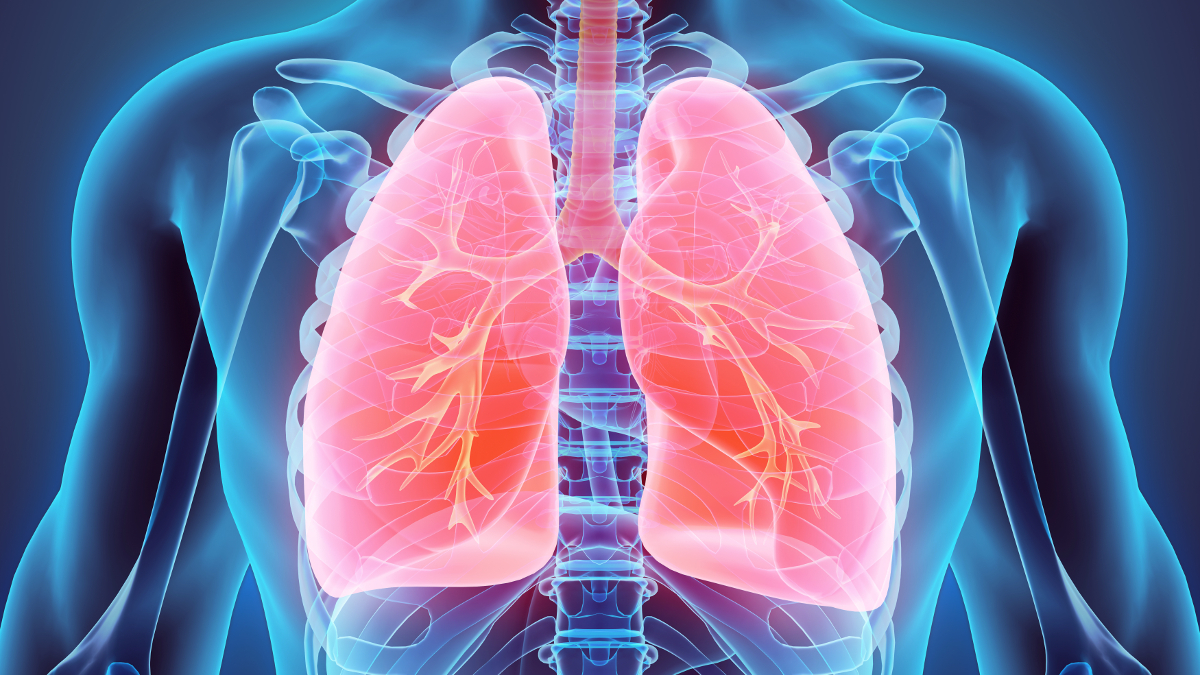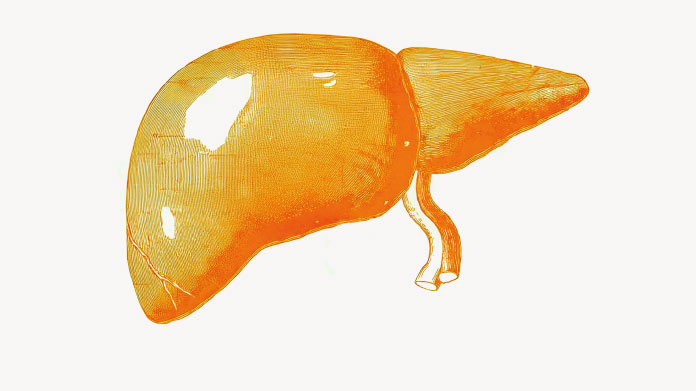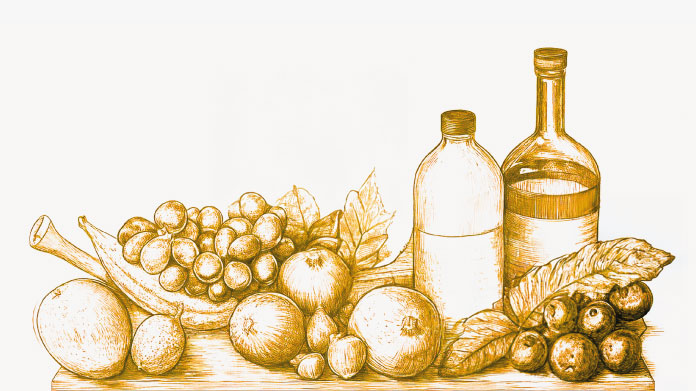5 plants that are good for lung health
Among the plants traditionally used to help cleanse and protect the lungs, the five described below offer particular efficacy.

Thyme
Thyme, whether of the garden or wild variety, has been one of the cornerstones of the traditional European pharmacopoeia since ancient times - it was valued by the Romans for its numerous benefits, as were most other herbs.
With a high content of thymol and flavonoids, thyme is reputed to have antiseptic and antifungal properties (1).
It was traditionally attributed with numerous benefits for respiratory health, including in particular, easing coughing fits, treating sore throats, and acting as an expectorant, thus detoxifying the lungs and helping those with asthma and allergies to breathe more easily. It can be consumed in the form of a herbal tea.
Spruce
A relative of the pine tree, with which it is often confused, the spruce is a popular choice of Christmas tree.
terpenes in spruce that are of particular interest to naturopaths and phytotherapists. These metabolites are thought to have antiseptic and expectorant properties, and to help thin mucus in the lungs (2).
Indeed, any plant related to the spruce can equally be used phytotherapeutically for the same purpose: Scots pine, fir, Aleppo pine and especially the excellent maritime pine.
Green tea
Green tea also has an excellent reputation. It is high in antioxidant flavonoids called catechins, one of which, epigallocatechin gallate (EGCG), may specifically help to reduce lung damage (3).
The nutritional supplement Lung Detox contains extracts of both green tea and maritime pine bark, along with several other beneficial compounds such as the super-antioxidant quercetin and N-acetylcysteine (NAC), recognized for helping to protect and clear the respiratory organs. This supplement has been specifically formulated to facilitate breathing and detoxify the lungs.
Eucalyptus
A large tree native to Australia, eucalyptus contains an active ingredient called eucalyptol, which is used in traditional pharmacopoeia to treat respiratory problems.
Containing volatile essential oils, eucalyptol (4) may have a beneficial effect on the fluidity of mucus in the lungs, improving the function of bronchial tubes. Traditionally, it is used either as an infusion or an inhalation.
Ginger
Last but not least in this list of lung-supportive plants is ginger. As a result of one of its most potent active ingredients, gingerol, this amazing root is used phytotherapeutically in many ways (5).
A powerful antioxidant, ginger is believed to have a significant effect in helping to cleanse and strengthen the lungs (try, for example, the supplement Super Gingerols) (6).
References
- Antimicrobial activity and chemical composition of Thymus vulgaris, Thymus zygis and Thymus hyemalis essential oils, María C.Rotaa, Antonio Herreraa, Rosa M.Martínez, Jose A.Sotomayor, María J.Jordán, Food Control, Volume 19, Issue 7, July 2008, Pages 681-687
- Secrets d’une herboriste. Marie-Antoinette Mulot, éditions du Dauphin, 2015
- Furushima D, Ide K, Yamada H. Effect of Tea Catechins on Influenza Infection and the Common Cold with a Focus on Epidemiological/Clinical Studies. Molecules. 2018;23(7):1795. Published 2018 Jul 20. doi:10.3390/molecules23071795
- Anti-inflammatory activity of 1.8-cineol (eucalyptol) in bronchial asthma : a double-blind placebo-controlled trial. R. JUERGENS, U.DETHLEFSEN, G.STEINKAMP, A.GILLISSEN, R.REPGES AND H.VETTER, Respiratory Medicine, Volume 97, Issue 3, March 2003, Pages 250-256
- Comparative antioxidant and anti-inflammatory effects of [6]-gingerol, [8]-gingerol, [10]-gingerol and [6]-shogaol, Swarnalatha Dugasani, Mallikarjuna Rao Pichika, Vishna Devi Nadarajah, Madhu Katyayani Balijepalli, Satyanarayana Tandra, Jayaveera Narsimha Korlakunta, Journal of Ethnopharmacology, Elsevier, 3 February 2010
- Shirpoor A, Gharalari FH, Rasmi Y, Heshmati E. Ginger extract attenuates ethanol-induced pulmonary histological changes and oxidative stress in rats [published online ahead of print, 2017 Nov 1]. J Biomed Res. 2017;31(6):521-527. doi:10.7555/JBR.31.20160151
Keywords
1 Days
On time shipping
On time shipping
GEORGE Verne
3 Days
Ordering was easy and the product was…
Ordering was easy and the product was delivered with no problems. Appreciated that I was notified when it would arrive. Thanks!
MascarC
8 Days
Great customer service - responsive …
I ordered from them and my item was unavailable for sometime. I was super happy when they reactivated my order and shipped my item which arrived very quickly. Great customer service.
Ruth Rueter
9 Days
Super fast shipping
Super fast shipping
Donald Borling
12 Days
Reputable companysearch and the number of…
The research and the number of selection of products.
NAKHJAVAN Shervin
25 Days
The Anti Aromatase is a great product
The Anti Aromatase is a great product. You just need to have constant inventory. Recently this product has been out of stock.
GEORGE Verne
27 Days
Great help on chat
Great help on chat. Knowledgeable and friendly.
Jason Argos
30 Days
Customer service was fast and friendly.
Customer service helped to stop the transaction process of the subscription. I appreciated that.
Greenie
31 Days
I order here due to the high quality of…
I order here due to the high quality of the products and the quick delivery of items - thank you
Barbara J
32 Days
SuperSmart's Eye Pressure supplements: highly recommended!
I purchase SuperSmart's Eye Pressure supplements regularly for over 5 years, and gotta say they are truly a wonderful product for my Glaucoma. Highly recommended if you have eye pain from your Glaucoma.
D. Martinez
37 Days
Quick service
Quick service
MONELL
37 Days
Speedy service.
Speedy service.
ROSENTHAL Marvin
41 Days
Clear website- Efficient
Clear website. Excellent search engine and fast delivery!
Mohamad Hussein
44 Days
They have great products.
They have great products.
Vickie
44 Days
Great Shipping Time!
You Have A Great Shipping Time! Praise The Lord!
DMHoge





